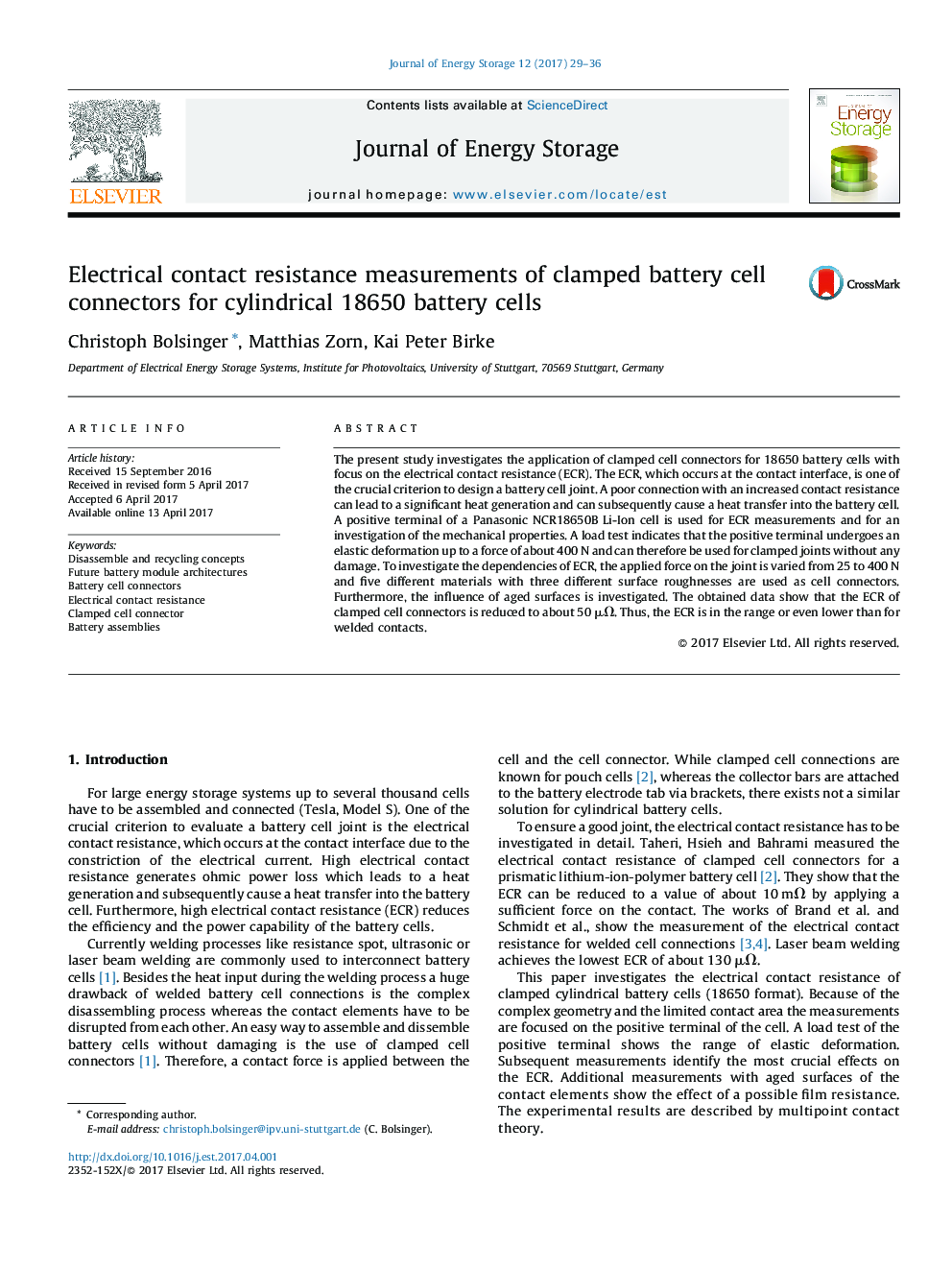| Article ID | Journal | Published Year | Pages | File Type |
|---|---|---|---|---|
| 5127284 | Journal of Energy Storage | 2017 | 8 Pages |
â¢The contact material and the applied force is crucial to achieve low ECR.â¢Lower ECRs than for welded cell connectors are achieved with clamped cell connectors.â¢Suitable materials for clamped cell connectors are Cu, Ni and CuZn.â¢Surface roughness and aging of the clamped cell connector has no significant effect.â¢The use of Cu as contact material achieves an ECR down to 50μΩ.
The present study investigates the application of clamped cell connectors for 18650 battery cells with focus on the electrical contact resistance (ECR). The ECR, which occurs at the contact interface, is one of the crucial criterion to design a battery cell joint. A poor connection with an increased contact resistance can lead to a significant heat generation and can subsequently cause a heat transfer into the battery cell. A positive terminal of a Panasonic NCR18650B Li-Ion cell is used for ECR measurements and for an investigation of the mechanical properties. A load test indicates that the positive terminal undergoes an elastic deformation up to a force of about 400 N and can therefore be used for clamped joints without any damage. To investigate the dependencies of ECR, the applied force on the joint is varied from 25 to 400 N and five different materials with three different surface roughnesses are used as cell connectors. Furthermore, the influence of aged surfaces is investigated. The obtained data show that the ECR of clamped cell connectors is reduced to about 50 μΩ. Thus, the ECR is in the range or even lower than for welded contacts.
